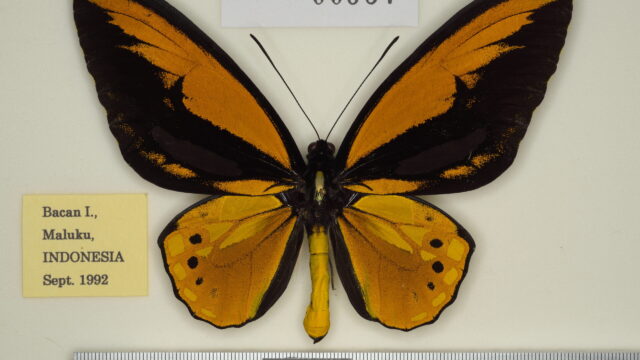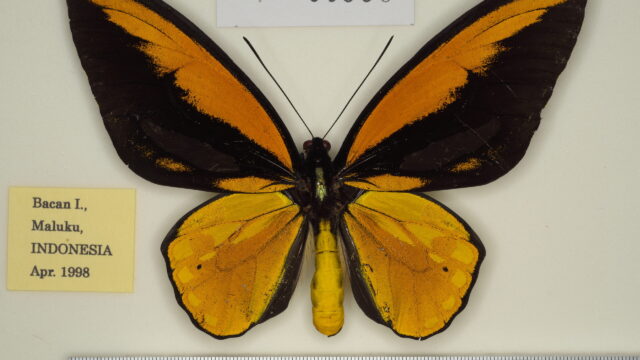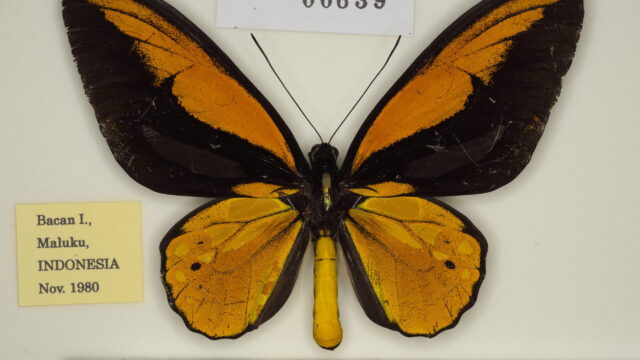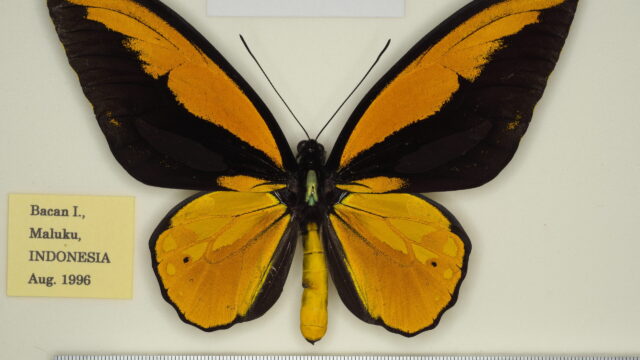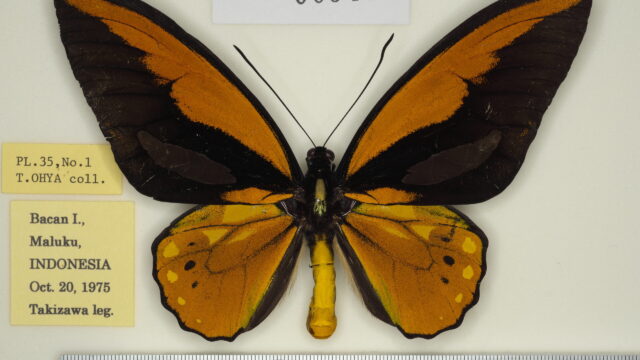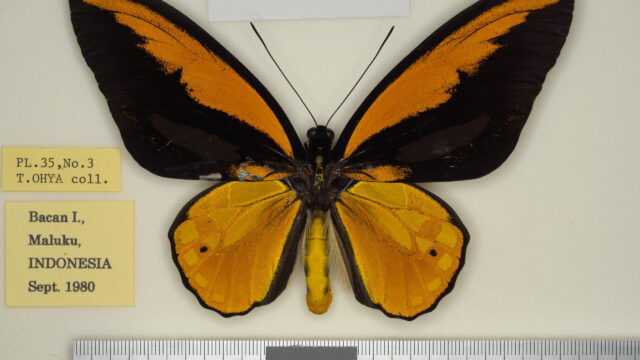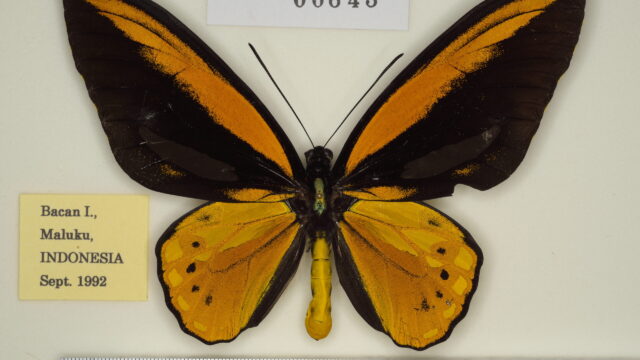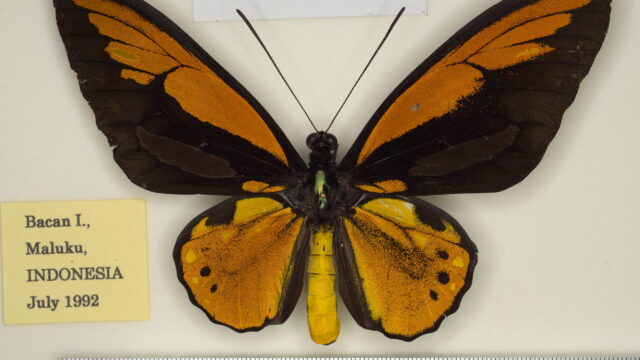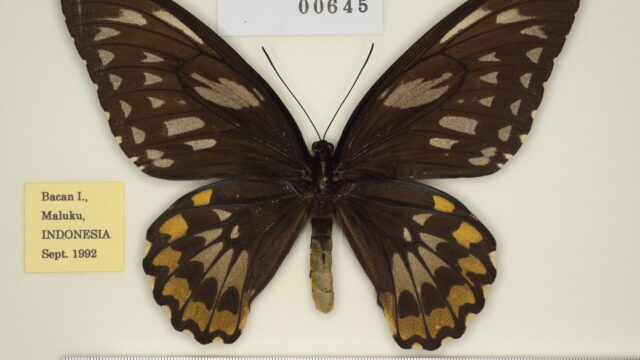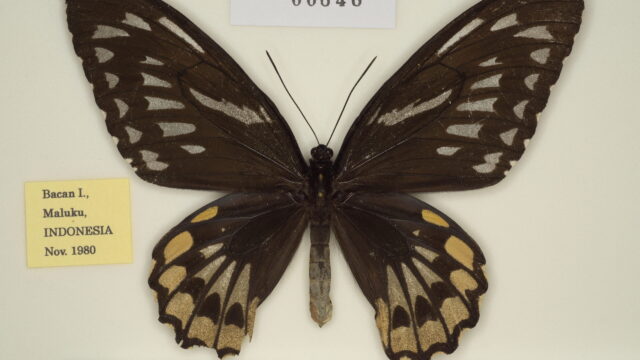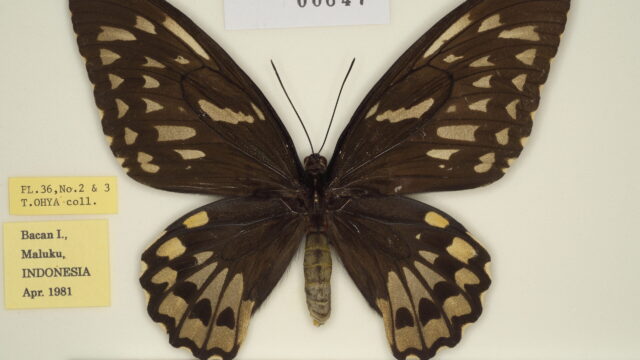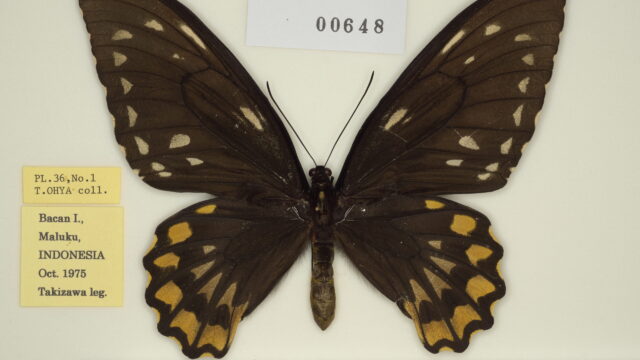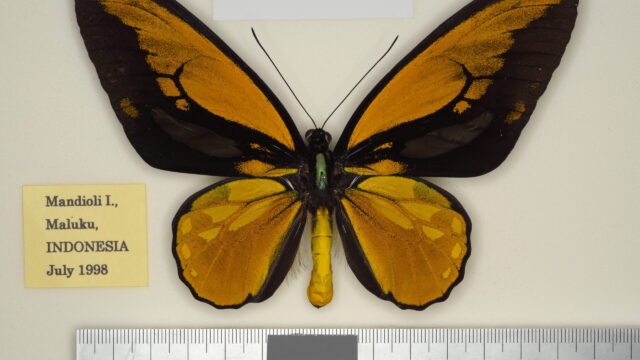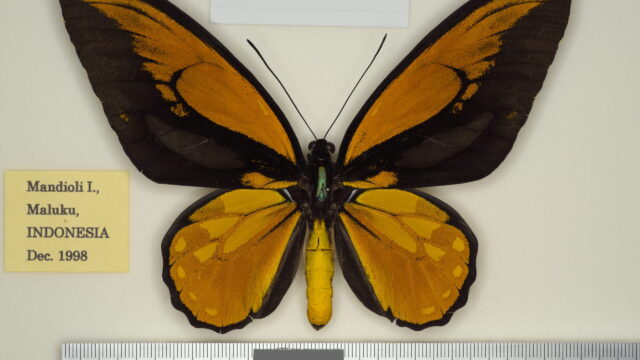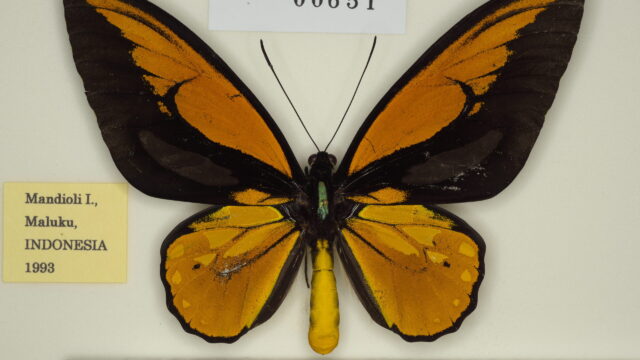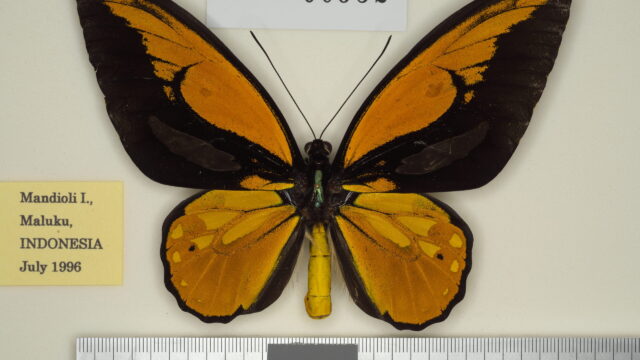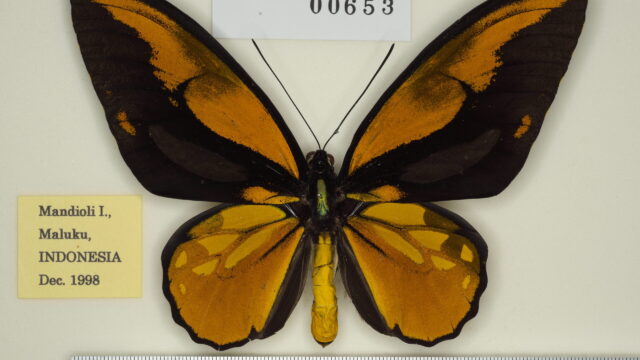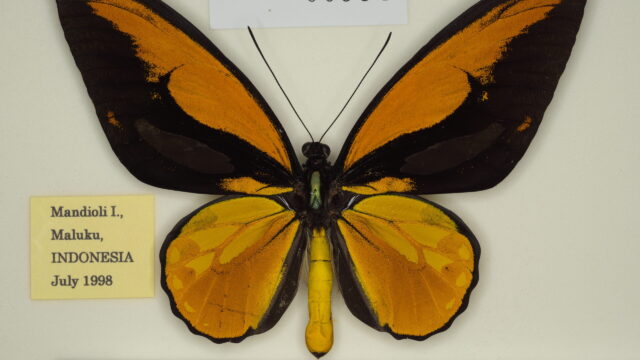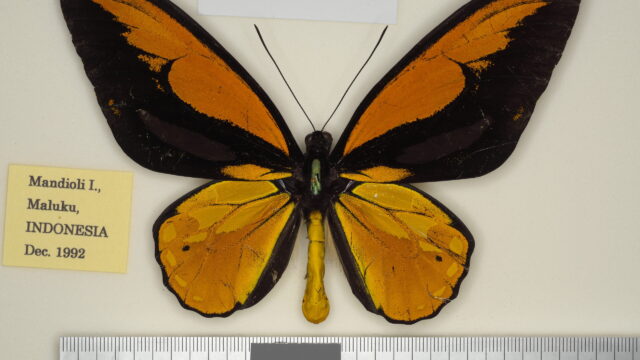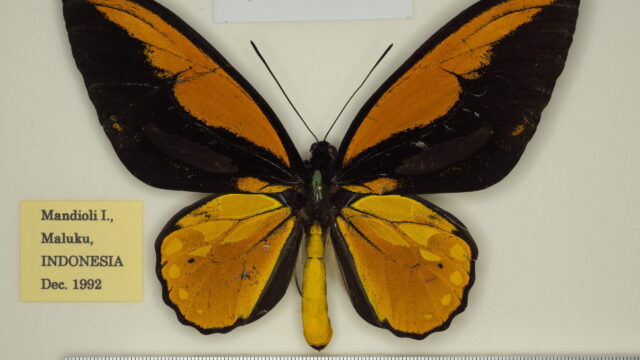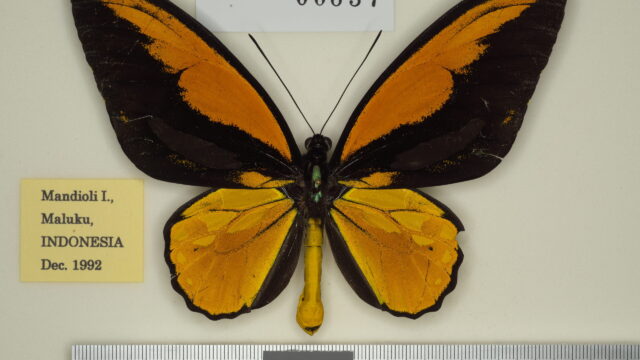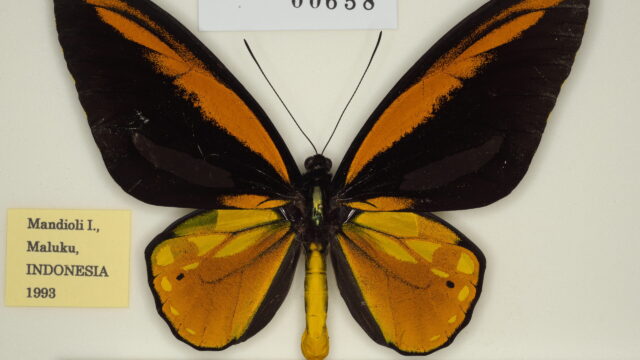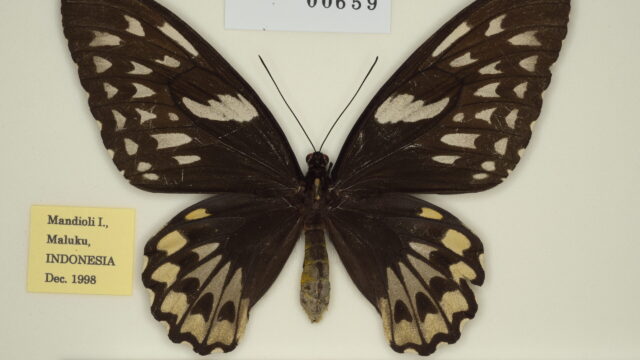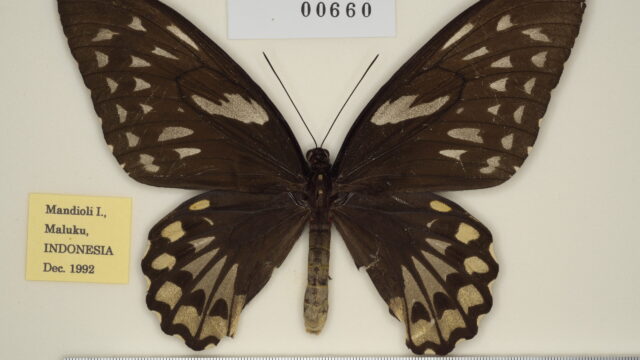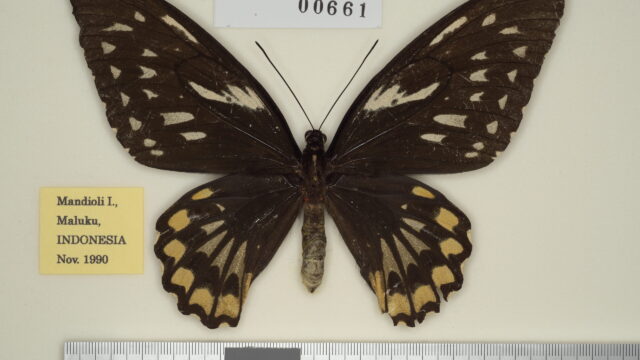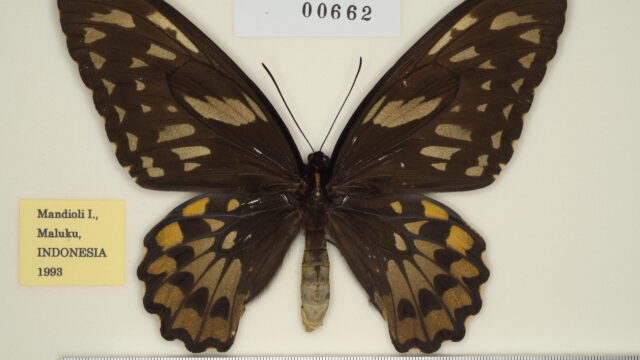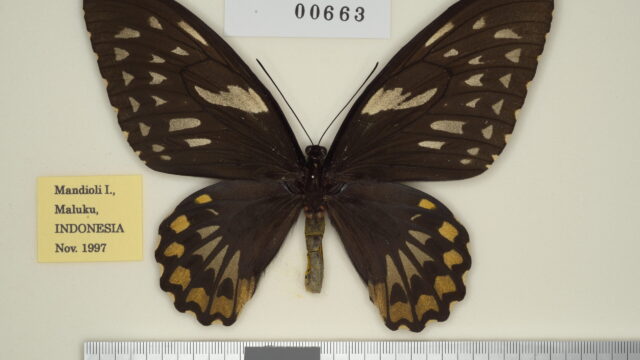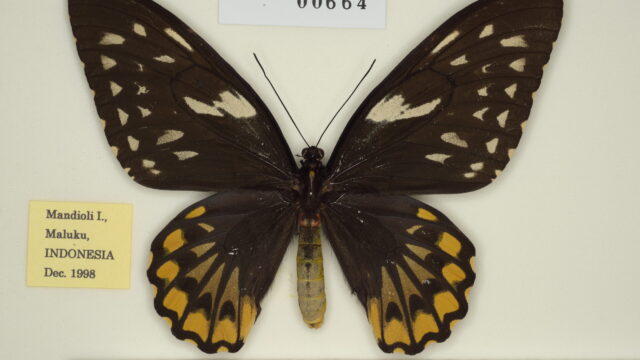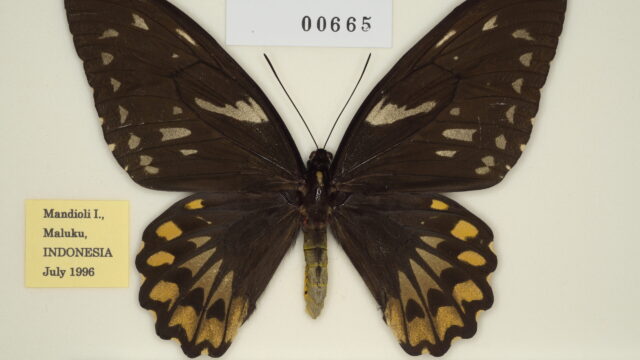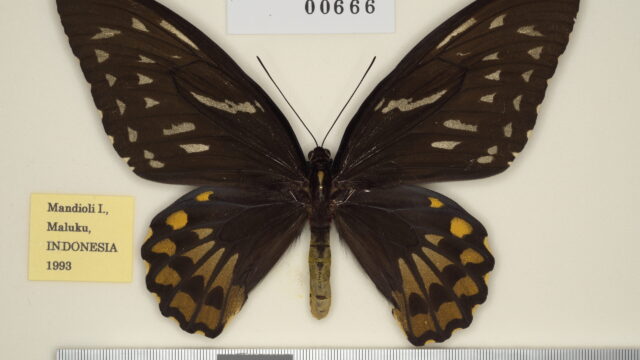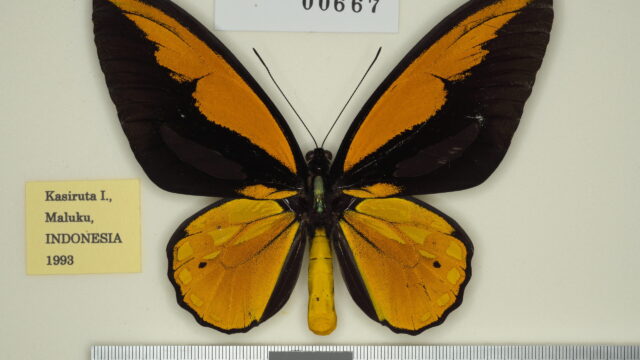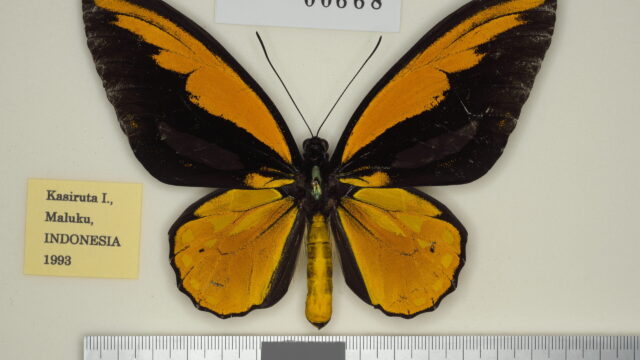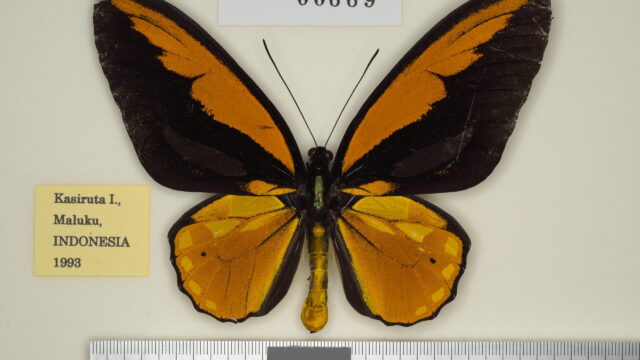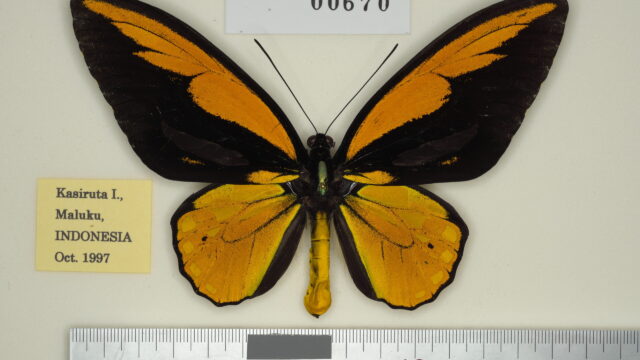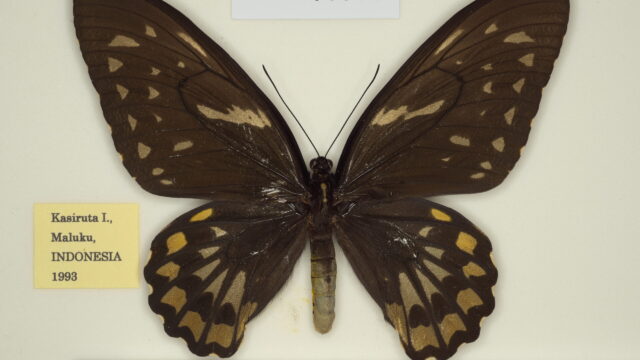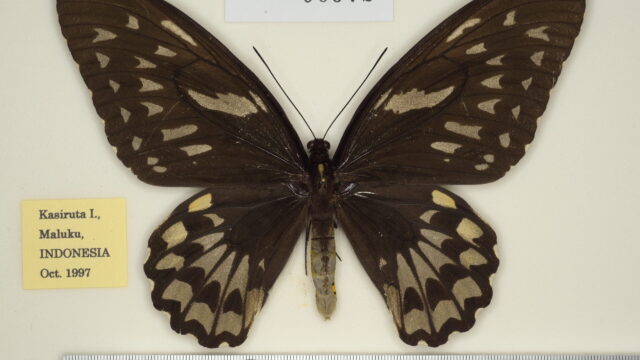- Ssp. croesus Wallace, 185924) [♂, ♀] (Formal report by Gray (1859)10))
(Distribution) [Map 29]
INDONESIA [Maluku] Bacan Is.
(Episodes of discovery and original description)
It was Wallace who both first discovered and proposed the species name croesus (the name of a king of Lydia who owned great wealth in the 6th century A.D.). However, there is a problem with the original description. Wallace sent a letter to Stevens in England dated January 28, 1859, giving a brief description of the ♂ he collected during his three-month stay on Bachan Island and describing his collecting activities. The letter was received on June 6 of the same year and published in volume 5 of the Proc. Ent. Soc. Lond. series 2. However, it was Gray who officially named and described the species croesus based on the specimens of 6♂♂ and 5♀♀ sent by Wallace, and the paper was published in Proc. Zool. Soc. Lond. on November 8 of the same year. This means that Gray was the original author. However, since Rippon pointed out that Gray’s description is nothing more than a copy of Wallace’s, and therefore the priority right lies with Wallace, his opinion has been upheld.
The famous episode of the discovery of this species by Wallace (1869) (Malay Archipelago (II): 257-258.) is as follows.
“The next day I went again to the same shrub and succeeded in catching a female and the day after a fine male. I found it to be as I had expected, a perfect new and most magnificant species, and one of the most gorgeously coloured butterflies in the world. Fine specimens of the male are more than seven inches across the wings, which are velvety black and fiery orange, the latter colour replacing the green of the allied species. The beauty and brilliancy of this insect are indescribable, and none but a naturalist can understand the intense excitement I experienced when I at length caputured it. On taking it out of my net and opening the glorious wings, my heart to beat violently, the blood rushed to my head, and I felt much more like fainting than I have done when in apprehension of immediate death. I had a headache the rest of the day, so great was the excitement produces by what will appear to most people a very inadequate cause.”
(Spotted pattern)
♂: The ground color of the wings is blackish brown. The iridescent scaling is yellowish orange with a golden green reflection, lighter than in ssp. lydius. On the FW, there is only the broad radial band and the small anal band, without the submarginal band and the median stripe. On the HW, there are semi-translucent golden yellow spots on the subcoastal space, the spaces of 6 and 5 medianly, the cell and the submarginal area, but they are smaller than in ssp. lydius, which is without the submarginal golden spots, and in addition the black discal spots are minute or absent. The patches on the FW underside are iridescent yellowish green and they are reduced on the FW.
♀: The ground color of the wings is blackish brown, and the spots are grayish white. The FW cell-spot divided into several striations, the subapical streaks, the submarginal spots, and the discal spot are all small. The pale discal spots (=pale band) of the HW are wedge-shaped, which divided by dark heart-shaped discal spots into inner and outer parts.
(Variation)
♂-f. lydioides Fruhstorfer, 19009): [Aberrant FW pattern] The color of the radial band is dark fiery carmine red like to ssp. lydius, and moreover the apical portion turns into a dark copper color.
♀-f. bahmedi Deslisle, 20043): [Particular aberration] Female bi-form; both left FW/HW present the typical dark form and both right FW/HW show the atypical pale form; on FW, almost all pale spots are larger, and on HW, the pale cell-spot is bigger and the wedge-shaped dark discal spots more reduced.
f. loc. wallacei Deslisle, 19911): [♂, ♀]
(Distribution) [Map 29]
INDONESIA [Maluku] Mandioli Is.
(Episodes of discovery and original description)
It was described as a subspecies of O. (O.) croesus by Deslisle in the same year based on 5 ♂♂ and 1♀on Mandioli Island in January 1991. The subspecies is named after the famous British naturalist Alfred Russel Wallace (1823 – 1913).
(Characteristics)
Inhabits Mandioli Is., a small island southwest of Bacan Is. Very similar to the nomino-typical subspecies, but the HW patterns of ♂ are much more stable.
(Spotted pattern)
♂: There is no definitive distinction between this form and nominotypical ssp., but on the FW, many individuals have a broad radial band, wrapping around the cell. On the HW, many have one black discal spot present or absent in the space 5. The green reflex is stronger.
♀: Difficult to distinguish from nominotypical subspecies.
(Variation)
♂-f. biaureomaculata Schäffler, 200120): [Aberration HW pattern] Additional semi-translucent golden spots discally in spaces 2 to 5, on HW.
♂-f. foli Deslisle, 20043): [Aberrant HW pattern] Typical submarginal semi-translucent golden spots absent in spaces 1b to 4, on HW.
♂-f. andreae Schäffler, 200120): [FW/HW discoloration] A strong green sheen covers iridescent orange scaling of FW/HW.
♀-f. bodnari Deslisle, 20164): [Particular aberration] Presence of bright yellow scales on the top part of the femur.
f. loc. helios Kobayashi & Hayami, 199214) [♂] [♀: Hayami, 199413)]
(Distribution) [Map 29]
INDONESIA [Maluku] Kasiruta Is.
(Episodes of discovery and original description)
Based on 2 ♂♂ collected at Kasiruta Island in January 1990, it was described as a new subspecies by Kobayashi & Hayami in 1992. The female, which was previously unknown, was described by Hayami two years later in1994. The subspecies is named after Helios (=Apollo), the sun god who crossed sky from east to west in a four-horse chariot and sailed back the east in a gold cup at night on the Okeanos.
(Characteristics)
It inhabits Kasiruta Is., a small island northwest of Bacan Is. Very similar to the nomino-typical ssp. but characterized by the large semi-translucent golden spots on HW of ♂.
(Spotted pattern)
♂: As in f. loc. wallacei, many specimens have a black discal spot in space 5 of HW, but the feature is that the submarginal semi-translucent golden spots are larger.
♀: No clear distinguishing points from nominotypical subspecies.
(Variation)
♂-f. atalli Deslisle & Sclavo, 20156): [Aberrant FW/HW pattern & discoloration] FW has a greatly reduced radial band with semi-translucent golden spots in spaces 7 and 8, and a minute submarginal band. On HW, semi-translucent golden spots atypically reduced and presence of four relatively larger black discal spots. Iridescent yellow scaling of both FW/HW is covered with green sheen as ♂-f. andreae Schäffler, 200120).
